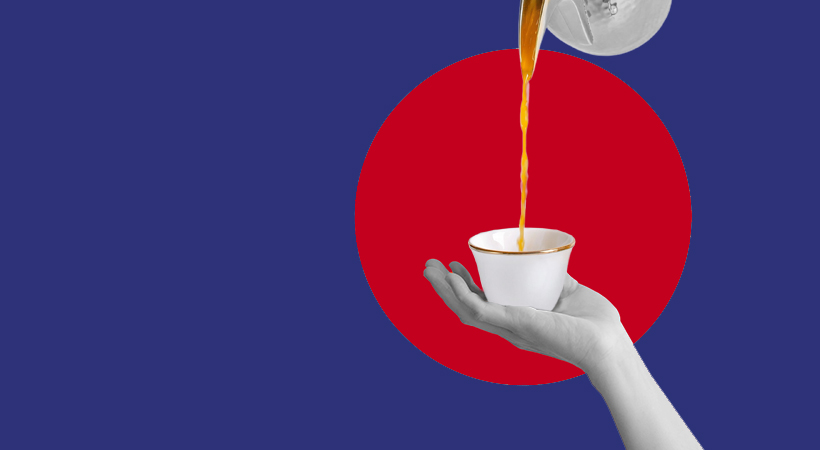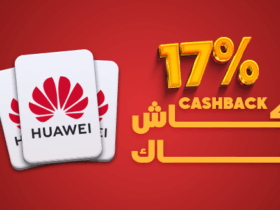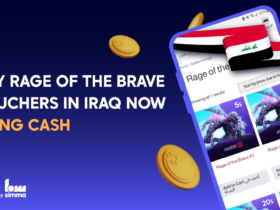International businesses across sectors have suffered by looking at MENA through a narrow lens when introducing their goods and services to the region. It’s estimated that there are around 30 (wildly) different Arabic dialects in MENA, more than 10 unique ethnic groups, and about a million variants of the recipe for Kibbeh. According to the World Bank, 66% of the population of MENA live in urban communities, but life in bustling historical cities such as Cairo, Baghdad, and Algiers is very different from the day-to-day of sprawling ultra-modern metropolises like Dubai and Doha.
Companies don’t do their brands and products any justice by standardizing their offerings and outreach across MENA, and most do little to localize them if at all. It’s not just brand awareness and positive association they’re not capturing, but also accessibility. Digital payments is an obvious example of this. Different online platforms and payment methods are popular in different MENA markets. Some have transitioned, relying mainly on digital payments, but others still expect some sort of cash option to always be available. Buy Now Pay Later services have taken some countries by storm, while credit cards have long dominated in others when breaking down the full purchase price of an item. Knowing what works where and, more importantly, what doesn’t, is the key to making it in MENA.
Let’s take a deeper look at the different cultures, demographics and patterns in Middle Eastern communities and their effect on market tendencies.
Getting to Know MENA
The intersection between the Arab world’s sophisticated cultural and habitual matrix and the new age of technology and connectivity has done wonders to the relationships between the people of the region and the digital products and platforms they’re spending their time and money on. Across MENA, market and buyer personas can be very different, and the incentives that generate growth in one community might not sway another.
A little over 450 million people live in MENA across 19 countries. The Levante, North Africa and Saudi Arabia make up the bulk of the population, while Gulf countries usually have a majority expat community, like in the UAE where 90% of the population predominantly comes from Asia, other parts of the Arab world, and Europe. Egypt is MENA’s most populous nation by quite a margin, registering over 100 million inhabitants, followed by Sudan and Algeria, each with less than half of that number.
Can You Say That 30 Different Ways?
While Modern Standard Arabic is standardized across the region, it’s rarely spoken. Colloquial Arabic, a cornucopia of 30 different dialects, is what’s used in day-to-day life. The Egyptian dialect is the most common one, but it’s rarely spoken outside of Egypt. Maghrebi, Levante, and Khaleeji dialects are dominant in their respective regions, but each dialect is distinctive in the different countries it’s spoken. So while Bahraini, Emirati and Kuwaiti Arabic might sound similar to a foreigner, each dialect has its own unique tonality, terms, and expressions derived from the local culture and every country’s history. Interestingly, if that same foreigner turned around and spoke Arabic to a friend from Tunisia, they’d have a hard time believing they were all speaking the same language.
Such linguistic intricacies can mean the difference between speaking directly to a consumer and drowning in a sea of other brands all doing the same thing. At Tamatem, we’ve curated our in-game experience to match the markets we’re targeting. For instance, the user experience of VIP Baloot, our online multiplayer game based on a popular card game in Gulf countries, is predominantly geared towards the Khaleeji-speaking audience who make up the largest portion of the game’s user base. Tamatem’s website, on the other hand, is written in Modern Standard Arabic because it targets the region in its entirety. While it’s not spoken in any specific MENA country, Modern Standard Arabic is taught in schools across the region and it’s understood by all Arabic speakers.
Age Is Just the Number
MENA’s demographic tips towards the younger side, with close to 60% of the population in Arab countries under 25 years old, and 28% of the population in the 15-29 age bracket. The youth of the Arab world are tech savvy, and this affects their purchasing and payment behaviors. For instance, MENA’s Gen Z are more inclined to use digital payments, constantly seeking out emerging alternative payment methods. They also love their social networks. According to The Arab Weekly, nine out of ten MENA youth check at least one social media channel daily.
Where exactly are they consuming their content? Well, it varies. A whopping 77% of Egyptian youth watch YouTube every single day, while Saudi Arabia is the world’s fifth largest Twitter market, and the nation with the fifth highest number of Snapchat users. So if you’re launching in KSA, it won’t make much sense to focus your marketing efforts on YouTube ads. Not only would it prove ineffective, it won’t even reach your target market. Meta’s lineup of products—Facebook, Instagram, and WhatsApp—consistently top the regional social network charts, and MENA millennials are twice as likely to post content online than the rest of the world. Finding the right channels to personally connect with young consumers who are likely to interact with your services makes a big difference when it comes to standing out and ensuring customer loyalty.
Income Is Just Another Cog in the Wheel
Income levels vary just as wildly as dialects in MENA. The top GDP per capita is dominated by Gulf countries, with Qatar, the UAE, and Bahrain being highest in that order. While financial prosperity is definitely an indicator of a market’s purchasing power and should affect adoption rates of new products and emerging tech, it’s not a telltale sign of market tendencies.
This becomes obvious when looking at the mobile gaming sphere in MENA. Thanks to high SIM card penetration rates, a predominantly young and tech savvy population, and an abundance of affordable Android smartphones, mobile gaming is consistently seeing rapid adoption rates across the region regardless of the wealth of each population. Most mobile games are either free, freemium, or require miniscule investments, and affordable smartphones can double as powerful and portable game consoles with cool massive multiplayer features. That’s why everybody around MENA, from palace dwellers to village peddlers, plays PUBG.
But a conversation about mobile gaming is inevitably a conversation about digital commerce and online payments. Before mobile gamers were looking for ways to unlock premium titles, remove ads, or deck out characters, the central banks and financial authorities of MENA countries have been trying to find ways to get their populations to bank online, use mobile wallets, transfer funds virtually, and most importantly rely less on physical cash.
It wasn’t easy, especially with such huge disparities in income levels across the region. Some communities just didn’t trust alternatives to physical cash, others simply didn’t have access to the tech required to join the digital finance arena. It was the ingenuity of the market makers sparked by MENA’s young digitally-empowered generation that finally got the ball rolling on digital payments, bridging the gap between the emerging markets and the new age of digital commerce. In some cases, hybrid cash/digital solutions were introduced, in others, digital payments solved a common hardship and incentivized the transition, and in most cases, it just made a lot of sense regardless of income to go digital when it came to payments.
The story of digital payments in MENA, the innovation, the successes, the do-overs, and the collaborations that brought this game-changing tech to the region, is a fascinating one. Check it out in our piece on the rise of digital payments in MENA.
MENA’s Shopping Seasons
It’s not just what the users of the region are paying for and how, when they’re completing transactions also plays a big role in the Arab world. A good example that demonstrates this is the traditional, cultural, and gastronomical festival that is the holy month of Ramadan.
How the region celebrates the holy month has drastically shifted, and the impact it has on consumer behavior has evolved, especially when it comes to digital commerce. Research shows that 53% of the region spend more during Ramadan, and 49% are actively on the look out for promotions and discounts. In fact, shopping inquiries on search engines spike to Black Friday levels during the month. COVID-19 also succeeded in reshaping MENA’s relationship with digital payments, and the convenience they provide is slowly making them preferable to cash, especially during Ramadan’s rush and overstimulation. A survey conducted by CheckOut in 2021 revealed that 76% of those surveyed in the UAE and KSA planned on online shopping more frequently during the holy month that year.
But when it comes to digital payments, Black Friday always comes out on top and is considered one of the biggest online shopping seasons in MENA. Shoppers in the UAE, KSA, and Egypt are particularly eager to find good deals, searching for them at a much higher rate than shoppers in the US and the UK. Electronics consistently top the wish lists of most consumers worldwide, and purchases in the gaming industry continue to increase with each passing year. Interestingly, sales are growing in width in MENA as more people seem to be shopping during the season rather than on the day itself. Around 55% of shoppers begin their shopping cycle before the actual sales, searching for products and compiling their lists. Come November, most people in the region are ready to click a button and buy whatever’s been in their carts for the entire year, but having to do it all in one day is far from convenient. Some businesses seem to have caught on, extending their offerings to span the whole month. So while overall online sales weren’t as high on the main day in 2021 as in previous years for example, more consumers made purchases before and after the day itself, effectively extending the period of high demand.
Navigating MENA, One Chart Topping Mobile Game at a Time
As much as the Arab speaking world has progressed to join other markets in the ways of digital commerce and new market trends, there’s still a great deal about the region that makes its culture, habits, and preferences unique.
Navigating MENA has no one-size-fits-all solution, especially when it comes to spaces such as mobile gaming and digital payments targeted at users in special environments. Building Tamatem, we had to have a deep understanding of all the different MENA markets and their cultures, knowing exactly what mobile gamers need to splurge on their passion, how much each demographic is willing to spend, and what payment channels are accessible and easiest to use in each country.
Today, unique cultural elements and thorough market research influence everything we build, from UX tweaks and in-game dialogue localization to product pricing, marketing channels, and digital payment methods. As daunting as the task of launching your flagship mobile game in the region seems, we’re here to make your integration seamless and lucrative. At Tamatem Games, our job is to make sure that MENA mobile gamers find the titles and products we push out relevant and relatable, as well as accessible and seamless. And with Tamatem Plus, our job is to make sure they have access to a multitude of payment channels across various offline and online methods curated to their purchase habits and environments. This means that gamers can top up their in-game wallets and purchase new titles using the payment methods they’re most familiar with and that they have access to.
Our existing user base of 1 million daily active gamers enjoying our 50 published titles makes us MENA’s largest mobile games publisher, and signals Tamatem’s reach and ability to connect to and retain users. Access to our user base and MENA-tailored marketing channels can guarantee that your new mobile game will be the talk of any town. Whether you’re looking to leverage the high purchasing power of Gulf users or you’re more interested in a large download count to collect tons of usage data, Tamatem is here to help you localize, publish, and target your games where they’ll resonate most with your goals.






